“We’re going up there, mate, and it’s fucking steep. But don’t worry, lunch first.” Kelv pointed to a white slash cut in an open C-shape on a distant ridgeline. After a week of cycling on gravel in southern England with him, I had come to appreciate his grade evaluations as being extraordinarily accurate and consistent. Fortunately, he said some of my favorite words: lunch first.
Uncle Krusty and I had traveled to the UK to meet Kelv and Woody to ride King Alfred’s Way, a 250-ish mile loop southwest of London that ostensibly starts and finishes in Winchester. We had started in Ryde, on the Isle of Wight, and ridden onto the South Downs Way and into Winchester, taking a total of 4 days to ride the route clockwise before cutting away and returning to the Isle.
Despite the travel horrors of 2022, and the spectacularly shambolic operation at Heathrow, my bike arrived. As is often the case, having it go to oversize instead of regular luggage (even though it’s not technically oversized) is faster and easier than standing around the carousel with jet-lagged people staring blank-eyed as their bag passes before them on its eternal loop.
KAW is a masterpiece of local knowledge. It connects paved roads, gravel tracks, bridleways, singletrack, and an ancient roadway. Created in the last few years by Cycling UK, it adds to the existing North and South Downs Ways and has quickly become an extremely popular bikepacking and bike touring route.
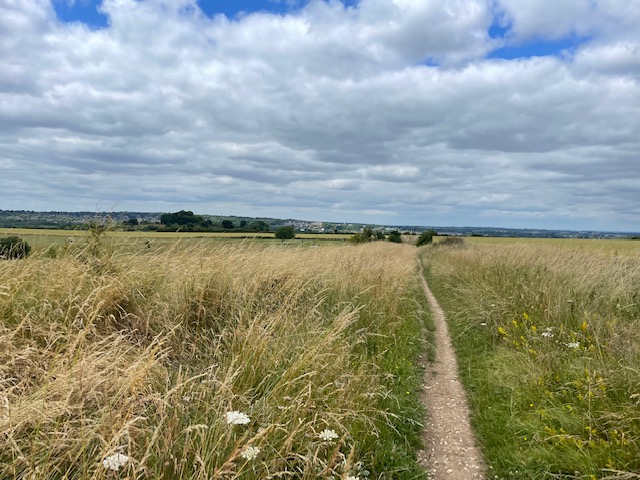
It’s complex in its assembly, but the route flows well and is easy to follow with a GPS-enabled bike computer. Cycling UK has an excellent guidebook as well, which I saved on my phone and forgot to reference. We almost never lost the route or backtracked, and it’s amazing in how it connects so many hidden pieces into a cohesive route. Based on the website and Facebook groups, it seems most people bikepack it, using established campgrounds or simply sleeping in hedges.
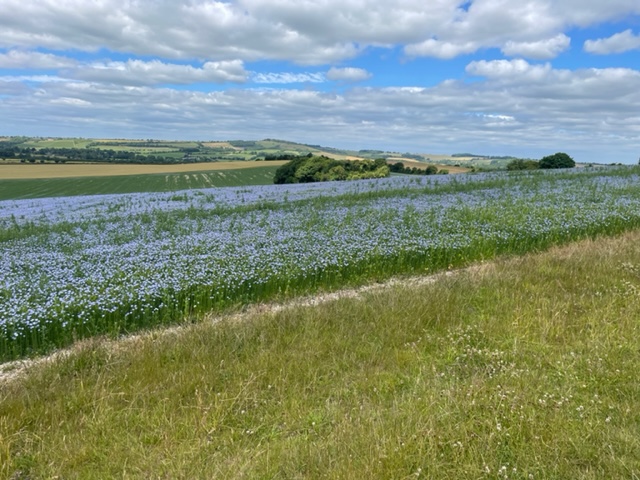

I’ve camped a lot, growing up in central Idaho and backpacking nearly every weekend in the summers of my youth. Although those were amazing adventures, it was long before the invention of bikepacking and always involved a significant amount of trudging through the forest. When I’ve tried to recreate some of these youthful adventures, I’ve noticed that geological processes have made camping less enjoyable. We all know the Earth is cooling. Long gone are the times when the crust was molten as meteorites rained down, the major continent-covering volcanoes are extinct, and the crust has hardened. In fact, it has hardened significantly since I graduated high school, and is noticeably more difficult to sleep on. I have decided that sleeping should not hurt, and that a night in a hotel costs about 1/3rd of a decent lightweight air mattress. Hotel beds rarely lose air overnight, and there are far fewer Noseeums indoors. I have gotten in trouble for campfires in my room, but that’s another story for another time.
Given this planetary phenomenon, Kelv and Woody planned our ride around KAW with hotels in mind. Being MAMILs themselves, they too ascribe to the theory that since most of the time you are in a hotel, your eyes are closed, there’s no reason to spend money on a nice one. I wholeheartedly agree, and a simple step or two in structural integrity past a dome tent is fine with me. Level floors and clean coffee cups may be appealing to some, but I’m willing to look past certain things.
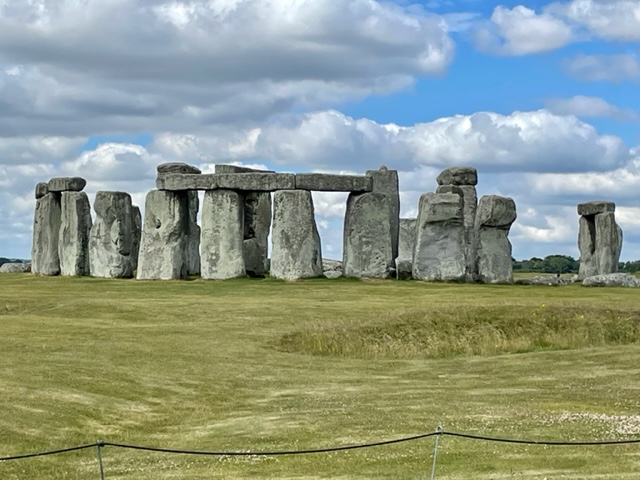
After 80 miles and 5600′ of climbing, my eyes were ready to be closed for some duration, particularly since the next day would be longer with more climbing. I drank several pints of delicious local ciders and beers to hydrate for the morrow.

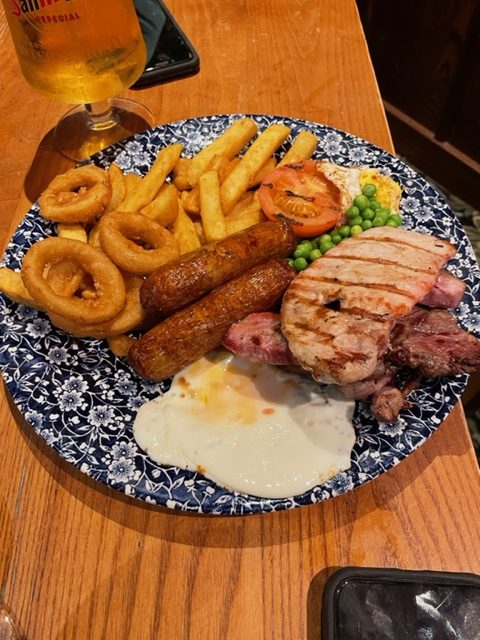
KAW offers views of quintessential British rolling fields with lovely hedges. Dozens of shades of green in patchwork patterns roll away as far as you can see. In many places, hedges towered over our heads, and in other sections, we plowed our way through overgrown nettles which lined our route and spiced up exposed arms and legs.
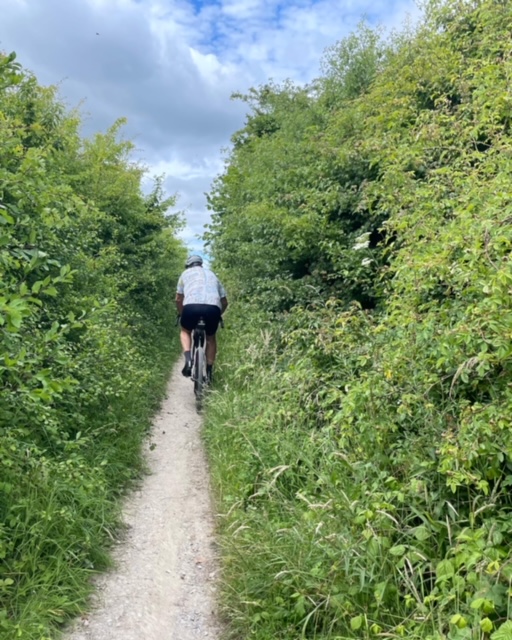
It brings a new aspect to the definition of “technical” riding, often with long trenches about twice as wide as a tire and up to 6 inches deep. These slots are often covered with grass and occasionally jog suddenly to one side or the other. Exiting them can be a challenge. Particularly along the Ridgeway, where Romans and others traveled to stay out of the soggy valleys, it seems like you are riding in wagon ruts that date back thousands of years. Riding across meadows and grass here is much different than at home.
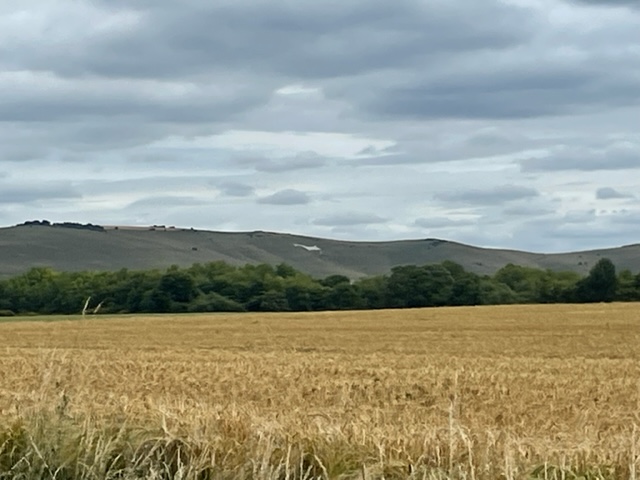
Here in the mountains, our alpine meadows are beautiful from a distance, but on closer inspection are full of rocks, gopher holes, sticks, cacti, and bear poop. Meadows and grassy areas along KAW and on the Isle of Wight are smoother than most manicured suburban front lawns, with hardly a stem out of place. A long descent off the Ridgeway on grass was smoother and quieter than brand new pavement, and brought huge smiles to our faces.
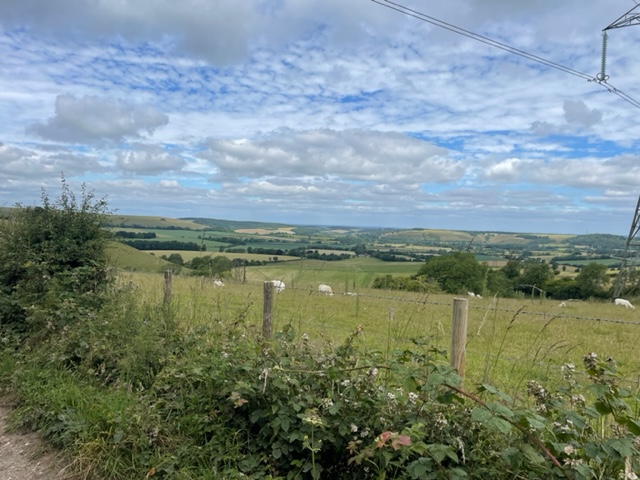
We were fortunate to ride the route in dry summer weather; our hosts have ridden it in the wet, and all I can imagine is that it would be brutal. Overall, though, the surfaces were pretty good- nothing hugely chunky, many miles of smooth meadow grass, and interesting bits of singletrack. Even the slots didn’t have much for hidden rocks in them.
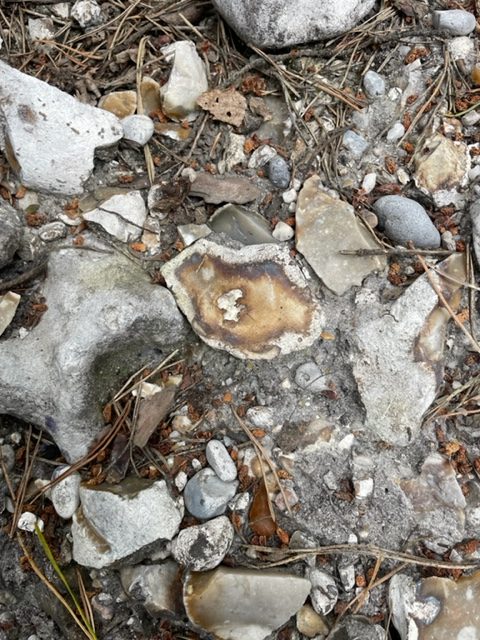

Day 3 was through bucolic horse estates, along the River Thames into Reading, and on to the Devil’s Punchbowl.
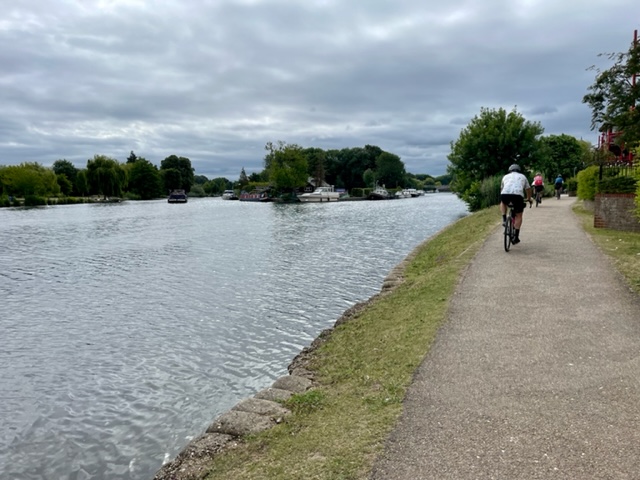
Due to the humidity and my impressive sweating ability, I felt like the Devil’s Punching Bag, so I swung onto the paved route to the hotel in order to skip the well-known steep climb out of the Punchbowl and bypass about 15 miles of the route on easier, flatter paved roads. Naturally, my shortened route of 8 miles was a 10% climb for 7.9 of them.
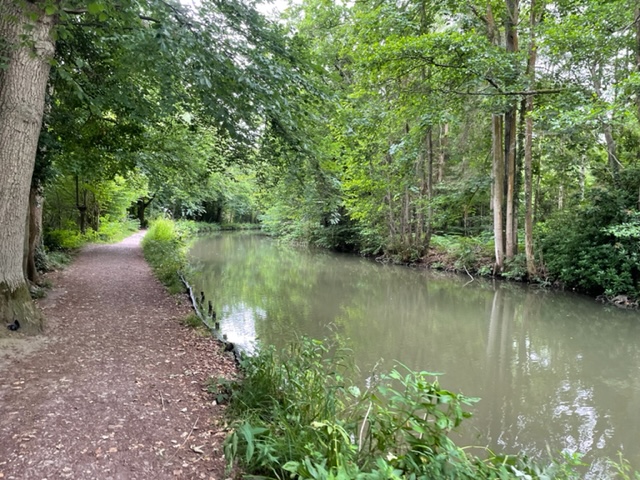
Day 4 was a rolling return southward to return to Portsmouth. Easy roads, other than the climb up Butser Hill, took us to the ferry.
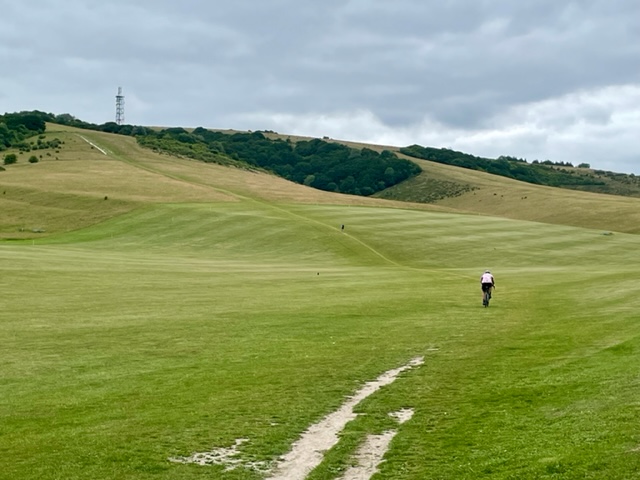
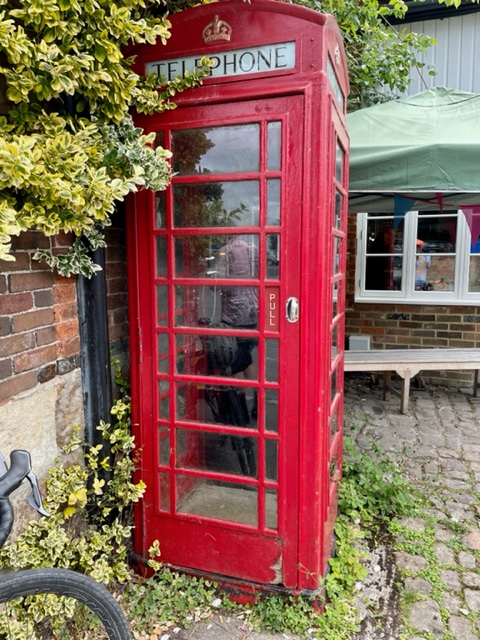
After our KAW adventure, it was back to the Isle of Wight and a search for their secret gravel. Basically, the Isle offered the best of KAW’s surfaces (minus the slot car tracks), coupled them with expansive views, and wherever possible, steeper grades. The Isle’s “gravel” spans multiple textures, from paved roads to pea gravel, smooth grass, slightly chunky farm roads, chalk, and pebbles. Again, we got lucky with weather. We managed to have no rain, light winds, and we finished our riding before the massive heat wave hit the UK, melting runways and creating fires.
The Isle of Wight is a short ferry ride from Portsmouth and/or Southampton. We used the passenger ferry from Portsmouth to Ryde, which is a pleasant, quick trip and has hourly departures. The Isle is not huge, less than 150 square miles, and roughly 30 miles east-west, 20 miles north-south. The western half is more agricultural, with wide open views and a large ridge crest that trends westward from Newport to The Needles. The Tennyson Trail offers a network of gravel routes that are best followed with a local. They thread along the ridgeline, through pastures and forests, and in some areas, between fairways on a golf course.
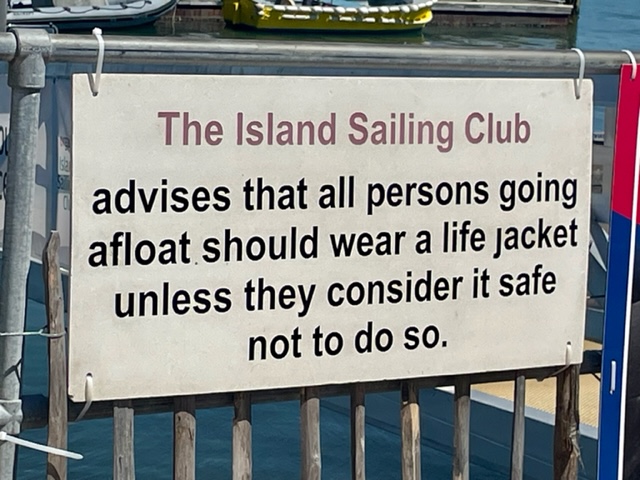
We started our exploration by heading generally south out of Ryde and trending eastward to Bembridge. After a breakfast purchased in a small bakery and enjoyed in a pocket park, we toured the southeastern quadrant of the island, on paved roads, 2-track farm roads, and bridleways.
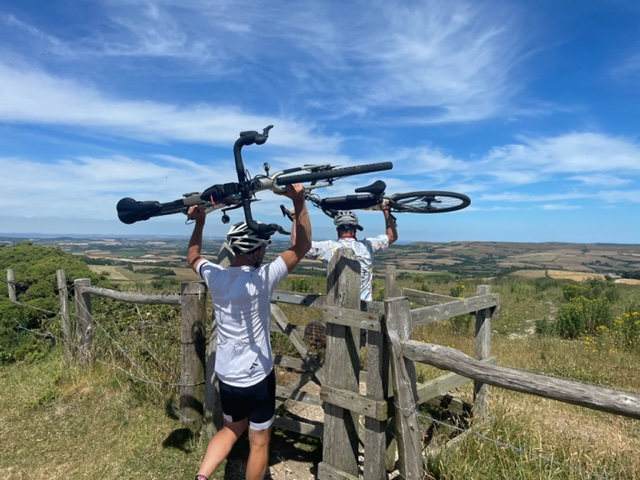
Views to the east and south into the English Channel were fantastic and a climb up Culver Down and to the Yarborough Monument was the best part of the day. That climb, plus a few others, were a stark reminder that despite the grades, the English have not yet invented the switchback.
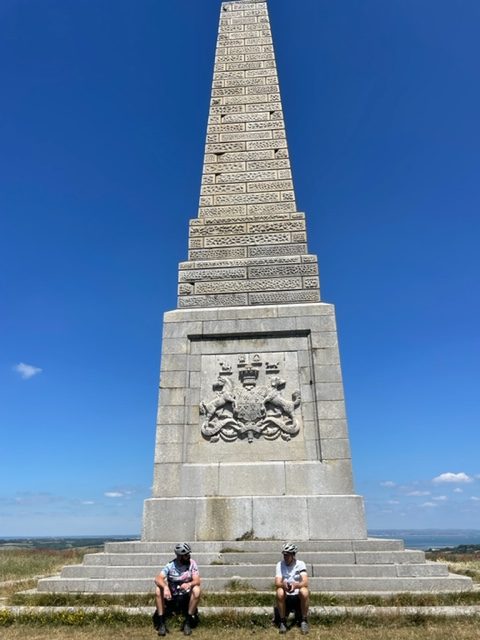
The next day was spent in the southern central part of the island, with more climbs through steep forests and onto tall Downs. Our hosts were not really able to explain why the part of the land that goes up into the air is called a Down, but they were perfectly happy to make sure we rode up several of them to see the views offered. And views there were.
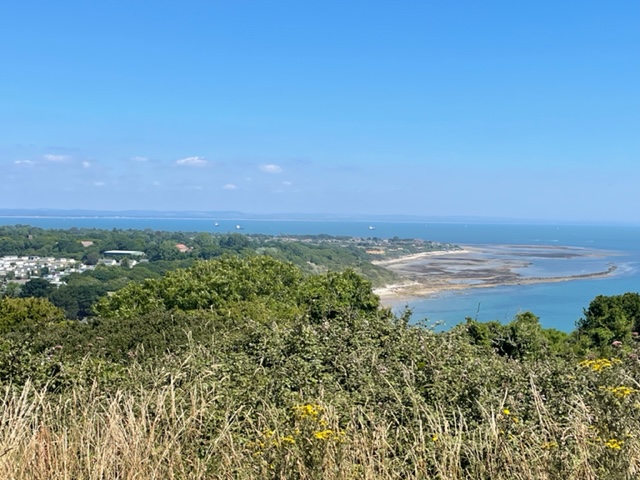
To the north, the English mainland spread out, with views into Portsmouth and the New Forest, and to the south, at ships anchored in the Channel, waiting their turn to enter the harbor. A steep climb (there is a theme here) took us to the Pepper Pot, a small ruin with 360-degree views. Along the main road near the base of this climb there is a tiny parking lot with an ice cream truck, which has the power to restore faith in mankind.

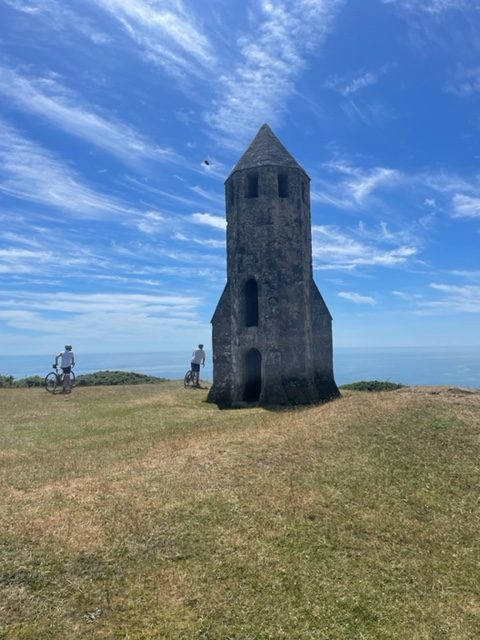
Day 3 was to be our largest: a visit to the westernmost point on the island- The Needles. White chalk cliffs jutting westward into the sea with knife-edges, these formations are picturesque and will be the finish of the 2022 Tour of Britain. Our journey westward took us across the River Medina at Newport. We rolled past the Spice Girls’ bus, currently as stationary as their careers, and climbed upward onto Tennyson Trail on the west side of the city.
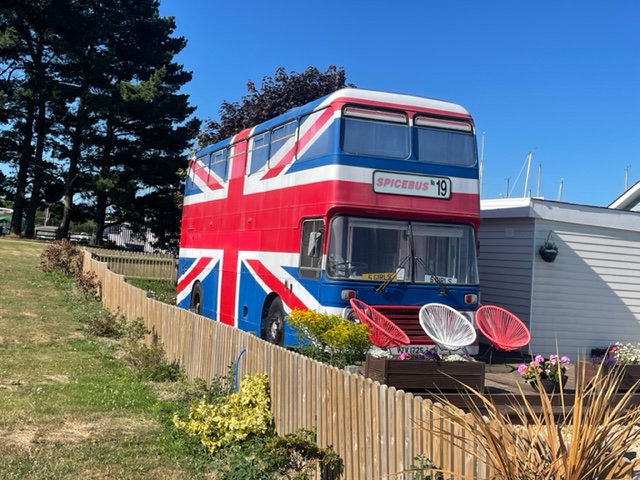

The climbing begins in earnest here, gaining nearly 700 feet in about 4 miles. Grades are well into double-digits, which is common for IOW climbs. The reward is cresting out and seeing the views, not to mention riding through flocks of sheep and coating your downtube in their turds. It’s organic, don’t panic.
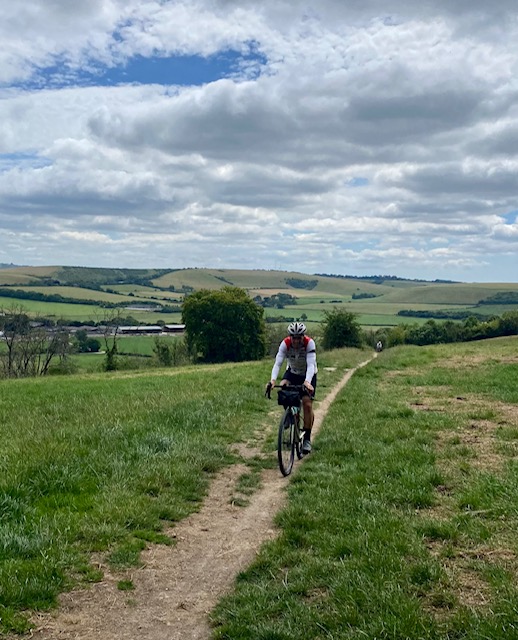
After a fun, steep descent though tall grass-covered meadows, we swung north off the route for much-needed food, before the afore mentioned steep fucking climb. The restaurant was excellent and a welcome hour spent sitting in the shade beneath giant trees before getting back on the bike. Maybe it was the food, maybe the delicious coffee, maybe the chance to rest the legs, but once we started climbing again I became keenly aware there’s no question the climb was definitely steep.
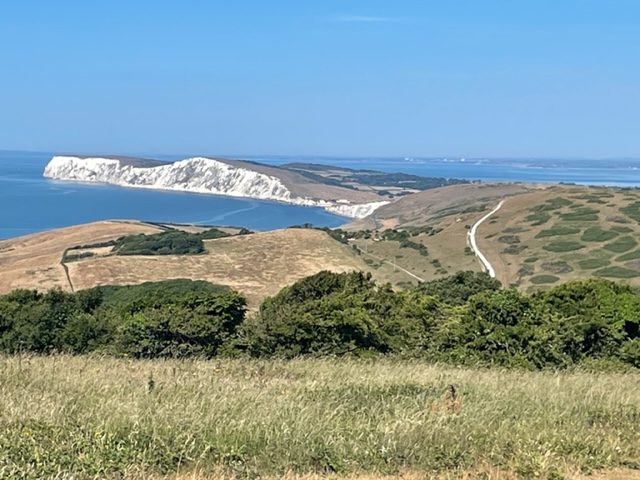
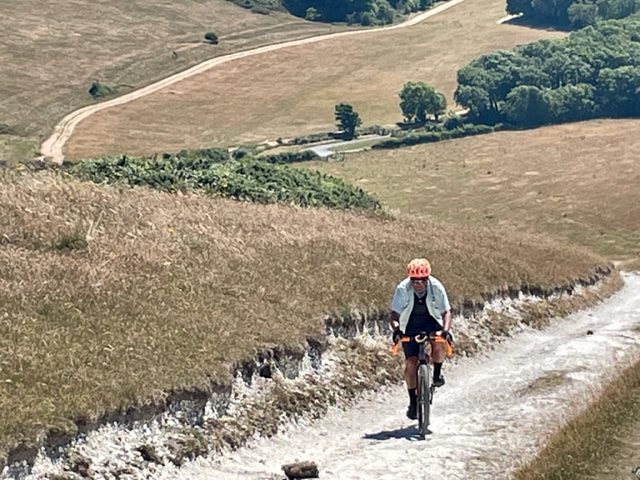
We descended down to Freshwater Bay, threading our descent between fairways on a golf course and keeping an ear out for a hastily-yelled “Fore!”. No shanked shots occurred, and we created no divots. A final climb out of Freshwater to the Tennyson Monument is on a smooth grassy slope, with grass shorter and smoother than a putting green.
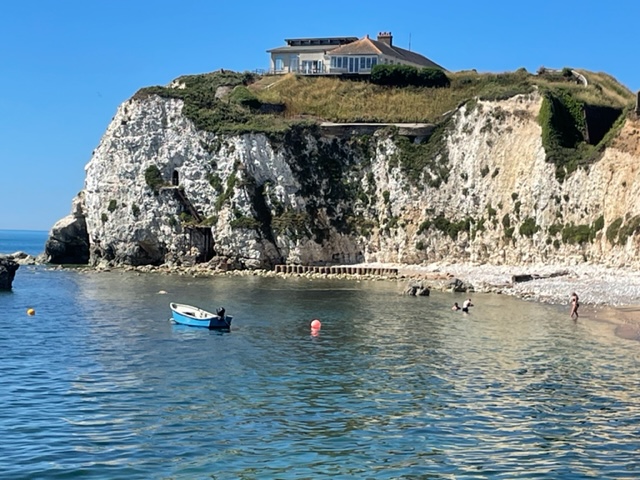
The grade would infuriate a golfer, most likely the final spoiler in their nice walk, but on a gravel bike, it was pleasant.
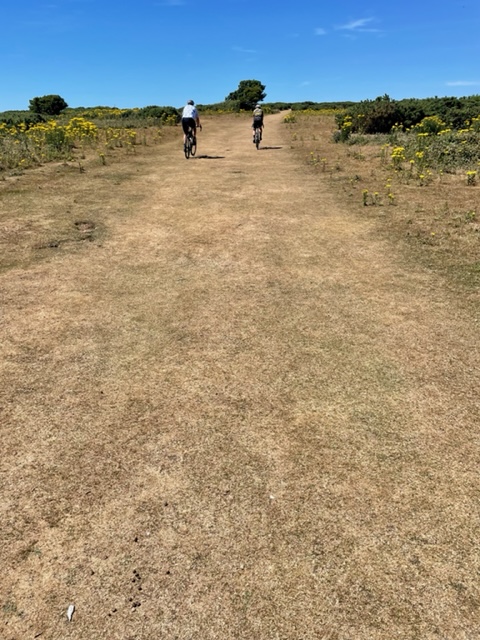

Eventually the grade breaks, and with vertical cliffs to your left, you crest out at the Needles viewpoint.
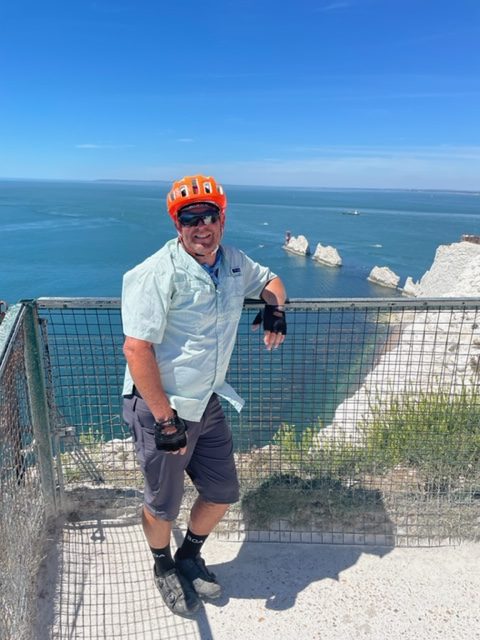
Old gun emplacements and rocket test structures frame the point of the island and offer excellent photographic opportunities. Looping northward off the peninsula, rolling roads took us back to Newport for a snack and then onwards to Ryde, where delicious gins and tonic, made with locally-distilled Mermaid gin awaited our arrival.

All told, the Isle of Wight has an amazing amount of cycling for its diminutive size, but like most places, local knowledge is key. And given that we were extremely fortunate with our weather, the Isle can have everything the northern edge of the English Channel has to offer, including high wind, rain, extremely high wind, more rain, and occasional wind and rain together. That said, it is also reputed to be the sunniest place in the UK, with many minutes of sunshine on offer each year. Sorry, but we used them all up on our visit.
The return home from Heathrow, on the same day the airport demanded that airlines send fewer passengers, was no more of a cluster than we had expected. Our only issue was that security staff was operating at about 50% capacity and 10% giving a rat’s ass. Uncle Krusty’s small carry-on was pulled aside for further inspection, and sadly for him, directly after a woman who seemed determined to infuriate the one security agent who was paying attention. I watched from a distance as Uncle Krusty attempted to pull hair from his shaved head (although, at the rate things were going, he’d have a pony tail by the time the person in front of him was done). I spend a fair amount of time in airports, and it never ceases to amaze me how many people are surprised by rules and regulations that have been in place for 20 years or more. My research has shown that a stiff drink helps ease my irritation at these clods, so I left Uncle Krusty to enjoy the show and hunted out several Bloody Marys. Uncle Krusty eventually arrived and expressed interest in my methodology, so I selflessly demonstrated how to have a relaxing morning cocktail.
An intrepid cyclist and gravel enthusiast could most likely comb Strava and Komoot in order to create routes on the Isle, but nothing beats riding with a local. There are simply too many pathways to take. Even Uncle Krusty, who has ridden there many times with Kelv and Woody, missed turns. At the time of this writing, Kelv and Woody are giving thought to a guiding service, which would make a visit there truly memorable. They have lived and cycled on the Isle for decades, and know every road and trackway. If you are interested in getting in touch with them before they become so famous and sought after that reservations are impossible to get, drop me a note and I will put you in touch with them.
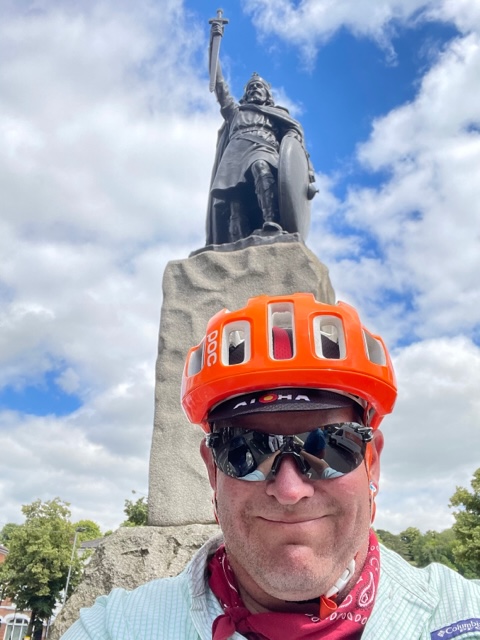
One Reply to “The Wight Stuff- Sampling Gravel on the Isle of Wight and King Alfred’s Way”
Comments are closed.